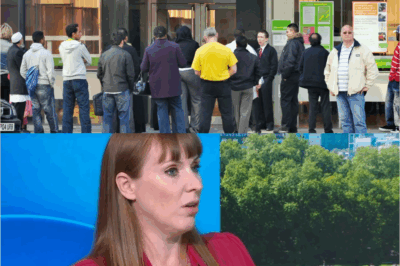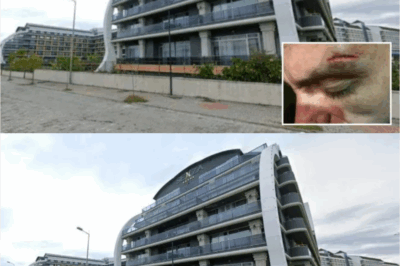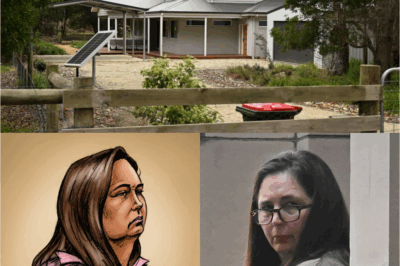Elon Musk has never been one to shy away from pushing the boundaries of what’s possible. From revolutionizing electric vehicles with Tesla to pioneering commercial space travel through SpaceX, Musk’s ventures consistently redefine industries. Now, his latest endeavor—the unveiling of the 2026 Tesla Aircraft—has sparked worldwide attention, promising to transform luxury air travel as we know it. With a sleek, futuristic design and a host of technological advancements, the Tesla Aircraft is poised to set a new global standard in aviation.

The aircraft’s exterior alone is enough to captivate even the most seasoned of travelers. Its aerodynamic profile is unlike anything currently seen in commercial or private aviation. Crafted from ultralight, high-strength carbon composites and integrated with solar-reflective materials, the design minimizes drag while maximizing energy efficiency. The body flows seamlessly into wing structures, suggesting a marriage between functionality and art. Everything about the design emphasizes speed, efficiency, and style—Musk’s signature trifecta.
What truly sets the Tesla Aircraft apart, however, lies within. The interior redefines what passengers can expect from luxury air travel. Designed to feel more like a five-star hotel in the sky than a mode of transportation, the cabin includes private suites with smart-glass partitions, fully reclining seats with built-in massage functions, and personalized climate control. Ambient lighting dynamically shifts to support circadian rhythms, helping reduce jet lag and making long-haul flights more comfortable than ever before.
Elon Musk’s commitment to innovation is perhaps most evident in the aircraft’s propulsion system. Abandoning traditional jet engines entirely, the Tesla Aircraft runs on a hybrid electric powertrain powered by ultra-dense lithium-silicon batteries and hydrogen fuel cells. This dual system ensures not only a longer range and faster speeds, but also vastly reduced emissions. The aircraft boasts near-silent takeoffs and landings, a nod to Musk’s vision for a quieter, cleaner planet. It’s a bold step away from fossil-fueled aviation and a giant leap toward sustainable aerospace engineering.
Beyond environmental innovation, the aircraft incorporates Tesla’s advanced AI navigation systems. Pilots are supported by an intelligent flight management assistant that continuously monitors weather, turbulence, and flight efficiency. Much like Tesla’s Autopilot in cars, the aircraft’s navigation system learns from every flight, optimizing future routes and performance. For passengers, this translates to smoother rides, fewer delays, and an overall enhanced flying experience.
The onboard entertainment and connectivity systems further elevate the in-flight experience. Starlink satellite internet ensures high-speed, uninterrupted connectivity anywhere on Earth, making it easy for business travelers to work and for leisure passengers to stream content, engage in video calls, or even attend virtual meetings while cruising at 40,000 feet. The entertainment suite includes virtual reality pods, interactive gaming lounges, and multi-language digital concierges to cater to a global clientele.
Safety, naturally, has not been overlooked. The Tesla Aircraft features next-generation safety systems, including AI-enhanced collision detection, real-time health monitoring of all onboard systems, and an emergency autopilot that can land the plane autonomously if necessary. In the unlikely event of a power failure, the aircraft is equipped with a revolutionary glide-and-hover mode powered by kinetic backup generators—yet another example of how Tesla’s innovations continue to change the rules of engineering.
Musk has also addressed accessibility, ensuring the aircraft can be configured to accommodate passengers with mobility challenges. Modular interior design allows for wheelchair-accessible suites, voice-activated assistance, and haptic feedback systems for the visually or hearing impaired. These additions signal a larger trend in Musk’s design ethos—one that merges inclusivity with innovation.
The Tesla Aircraft is not just a private jet for the elite. Musk has announced plans to release two versions of the aircraft: one designed for high-end personal and corporate travel, and another for commercial routes. The commercial version, expected to seat around 70 passengers, will offer many of the same luxurious features at a price point competitive with first-class international tickets. Musk’s ambition is clear: to democratize luxury air travel in the same way Tesla made electric vehicles more accessible.
Critics of electric flight have long cited energy limitations and infrastructure challenges, but Musk and his team appear to be tackling these issues head-on. Tesla is working with international airports to build rapid-charging stations and hydrogen refill points. In conjunction with SpaceX, the company also plans to develop high-altitude charging drones capable of wirelessly recharging aircraft mid-flight, using a focused-beam technology derived from solar power satellites. While still experimental, these innovations could redefine the future of long-haul aviation.
Another unique feature of the Tesla Aircraft is its vertical take-off and landing (VTOL) capability, thanks to retractable rotor systems embedded in the wings. This allows the aircraft to operate in environments lacking traditional runways—opening up possibilities for island nations, remote research stations, and urban centers with rooftop landing pads. This added flexibility may further disrupt traditional aviation logistics, pushing the industry toward more decentralized and responsive flight models.
Investor interest in the aircraft has already surged. Industry insiders suggest that some of the world’s leading carriers have placed pre-orders for the commercial model, while private buyers from the tech and entertainment industries are lining up for the limited-edition personal variant. Tesla’s stock has responded positively, with analysts forecasting an entirely new revenue stream that could rival its automotive division within the next decade.
As always with Musk’s ventures, the vision extends far beyond the product itself. The Tesla Aircraft is not just a feat of design and engineering—it represents a broader ambition to reshape the way humanity moves. With an eye toward a multi-planetary future, the aircraft’s modular architecture is already being studied for potential use in Martian atmospheres, suggesting that this innovation may serve both Earth-bound travelers and future space colonists alike.
Ultimately, the 2026 Tesla Aircraft is more than just a new toy for billionaires or another entry in Elon Musk’s portfolio. It’s a transformative step toward the future of aviation. Combining sustainability, luxury, and next-level technology, the aircraft demonstrates what’s possible when innovation is guided by vision and executed with precision. If Musk’s past is any indication, the skies—and perhaps space itself—are only the beginning.
News
“BANKRUPT BRITAIN?!” – Labour’s Plan to WATER DOWN Its Already Flimsy Welfare Reforms Could HURL the UK Into TOTAL FINANCIAL MELTDOWN
LABOUR is making a complete mess of welfare. Panicked and driven Left-wards by Reform’s surge, the Government is wobbling on the…
“TURKISH HOTEL TERROR!” – Brit Dad Brutally BEATEN TWICE in Front of His Kids… Family Holiday Spirals into a Living Nightmare
The alleged attackers reportedly had a feared reputation A DAD-OF-TWO said he was attacked twice in front of his kids…
“FED to PIRANHAS!” – 31-Year-Old Mum of 3 Vanishes After Ex’s Savage Revenge… Body Still Missing in Brazil
A MAN was caught on CCTV putting his former wife’s body in the boot of a car before coldly dumping…
“Dinner Party of DEATH!” – You Won’t Believe Erin Patterson’s Gross Confession After Her ‘Killer’ Mushroom Meal Claimed 3 Lives
MUSHROOM cook Erin Patterson who is accused of killing three people with a poisoned beef wellington graphically described how she…
HOLIDAY BLOODBATH! Teen SLASHED to Death with Broken Bottle in Lisbon—UK Tourist (27) DRAGGED Back to Portugal in Dramatic Midnight Extradition
Daniel was reportedly attacked while trying to defend a friend A BRITISH tourist has been arrested and extradited to Portugal…
LIVERPOOL PARADE CARNAGE! 53-Year-Old Driver PLOUGHS into Crowd—47 Injured, 4 Kids Hurt—Police Shout “NOT TERROR!” Fans in SHOCK
Emergency crews arrived to find people lying injured in the road and some trapped under the car FOUR children were…
End of content
No more pages to load












